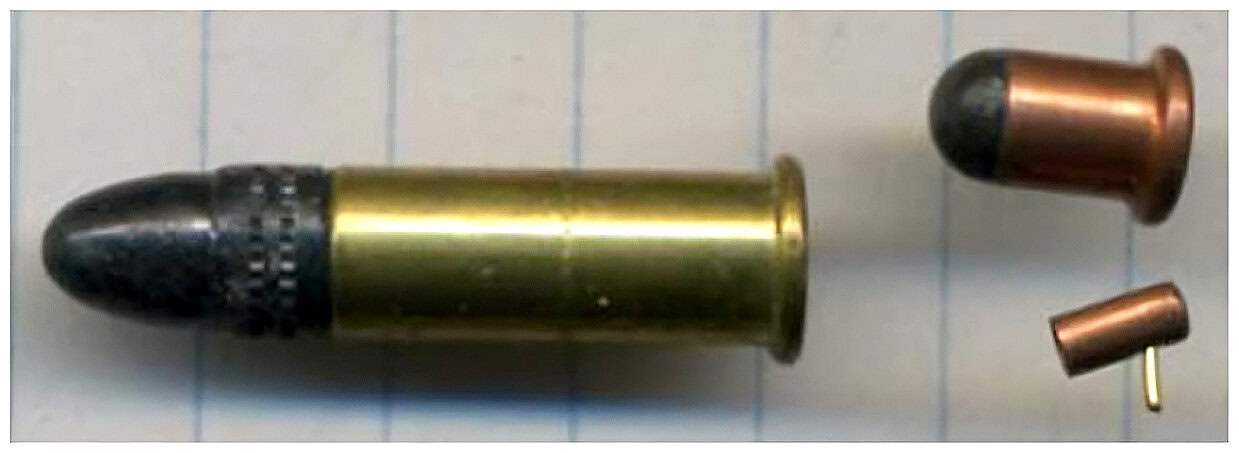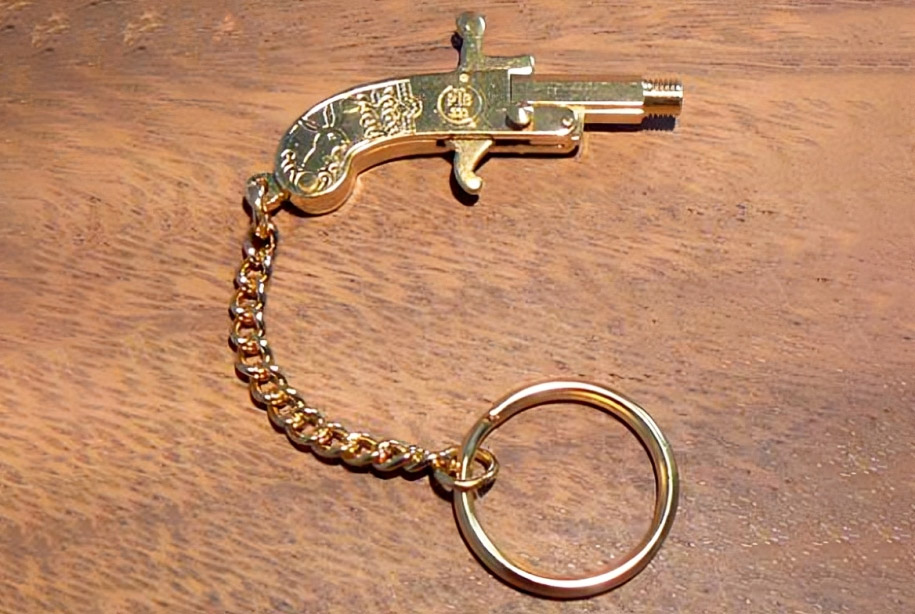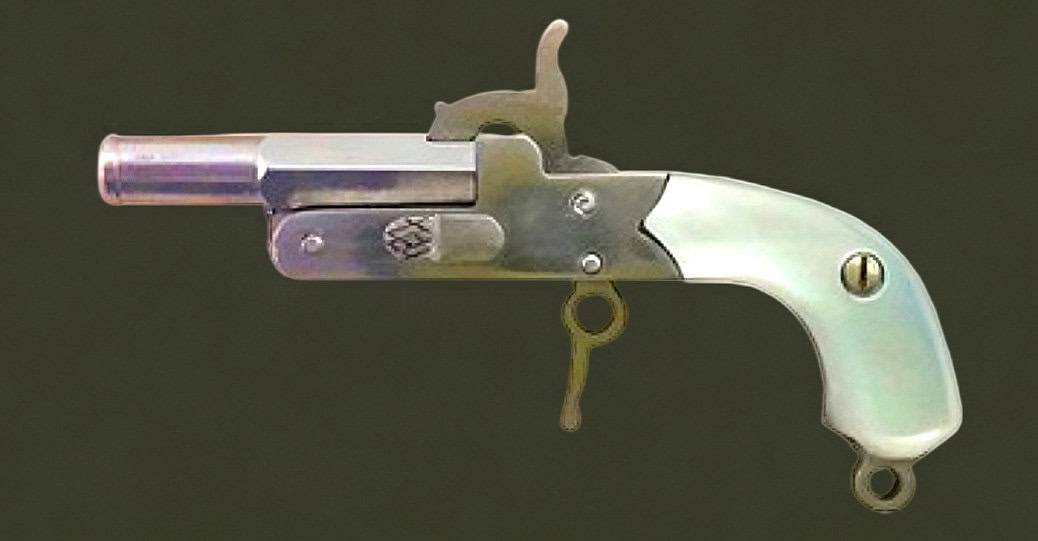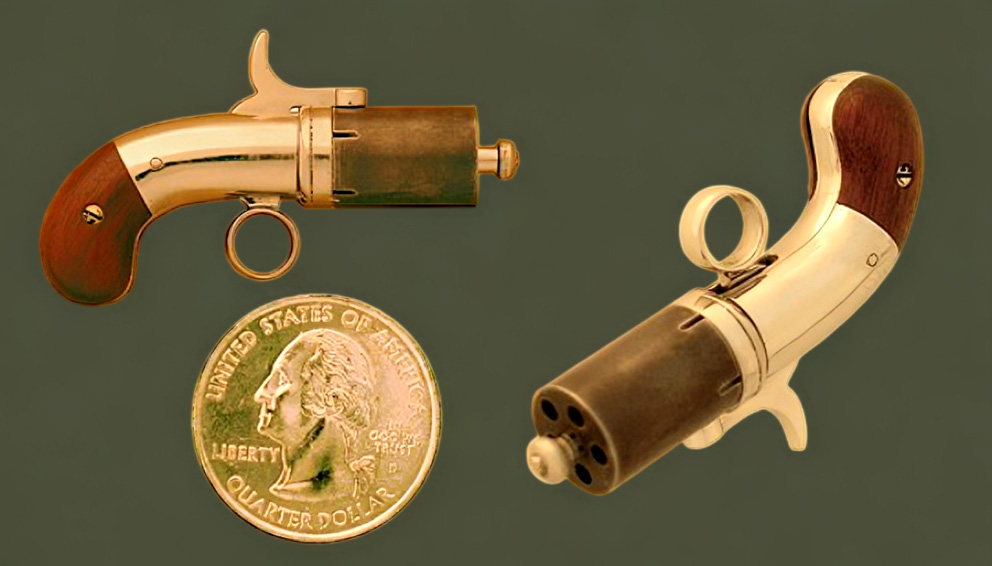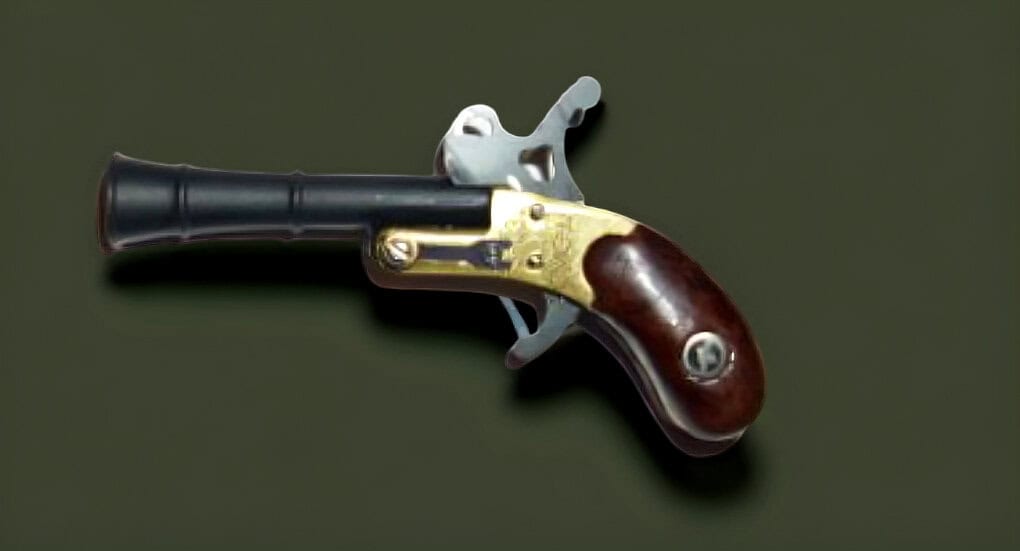Little Giants: A Journey Through 2mm Pinfire Gun History. Part I
Do you like historical weapons? Unfortunately, there are few opportunities to purchase a genuine Lefaucheux revolver. Even if you are lucky enough to find it in an antique store – it will most likely cost a lot of money. However, an alternative variant for a lower budget is miniature models of guns that shoot such cartridges. They are no different from the originals – except for the size. And as for the manufacturer’s skills and constructive solutions, such models are much more enjoyable.
Table of Contents
The most popular question, usually asked by people who first look at a 2mm pinfire pistol, is, “Is it possible to kill someone using such a weapon?” We always meet a curious person at each exhibition who asks about it. The answer is simple: you can kill using even a pencil if you know how to beat it. Nevertheless, miniature pistols and rifles are not officially recognized as firearms, and they are permitted for sale in any country.
The thing is that the shot power of such guns depends on their cartridges. As a rule, producers of souvenir mini-models make blank cartridges for them. If they supply them with bullets, they don’t completely fill up the shell with explosive substance: only a third part of space is used, or even less. Their task is to achieve the effect of authenticity without a significant destructive impact. It means providing sufficient entertainment with good safety characteristics. The history of cartridges for miniature firearms is no less attractive than this kind of weapon itself.
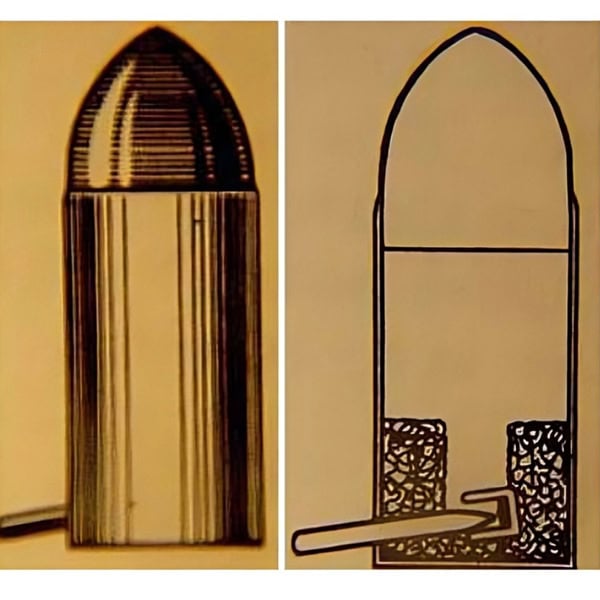
2mm Pinfire: the Smallest Cartridge
2mm Pinfire is the smallest of the cartridges that exist in mass production. Its alternative names are 2mm Lefaucheux, 2mm Minipin, Brooch 2mm, and 2×3.75 Berloque.
“Pinfire” is a unique cartridge design, with the capsule situated not on the back part of the sleeve but on the side. A pin coming out from the other side of the cartridge affects the capsule. Blasting is done by hitting the pin.
This design was popular in the 1850s – 1870s in France and Britain; it was used mainly for single-shot pistols and revolvers. Now, it is used in replicas of historical models and miniatures.
The photo displays a 2mm pinfire at the lower right corner, a 4mm Flaubert cartridge above it, and a large .22 caliber cartridge with a brass sleeve on the left.
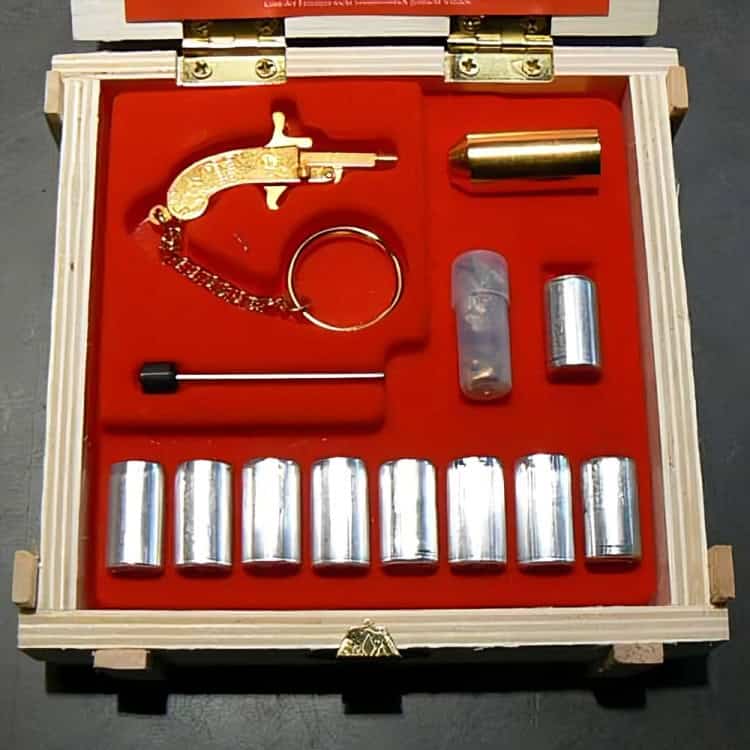
The Very First 2mm Pinfire Gun
The first mention of the 2mm pinfire appeared in the DWM catalog in 1899.
In 1905, the Austrian watchmaker Gerhard Gebharter founded the Berloque company and began the production of singly charged mini-pistols with a caliber of 2mm. The company exists today; it continues to produce these pistols in an inexpensive souvenir version.
Since then, the caliber of 2mm has become the standard for all manufacturers of miniature firearms.
Currently, many masters make guns for this cartridge.
However, they usually create piece goods or small series – 2mm pinfire pistols are not produced massively because there is a relatively narrow circle of people interested in such art objects.
Basically, they are collectors and lovers of exotics who appreciate the factor of exclusivity of each product: its rarity is significant. Therefore, gunsmiths producing miniature copies of pistols and revolvers do not focus on the quantity; they think about the quality. At the moment, many miniaturists are located in the United States.
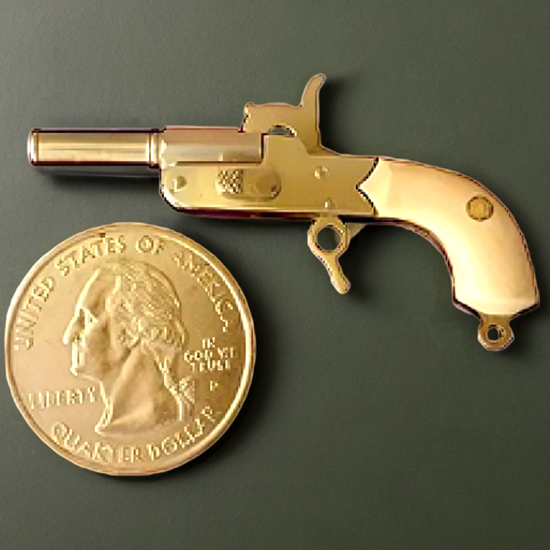
Bob Urso’s Pinfire Guns
The former art professor at Western Washington University, Bob Urso, is especially worth mentioning. He not only released many interesting 2mm pistols but also organized the American Miniature Arms Collectors/Makers Society.
On his site, you can see an assortment of small guns the size of a lighter. There, you can find a variety of designs ranging from fully automatic to single-shot pinfire guns.
Muff Pistol. Such tiny golden and silver accessories were trendy in Europe in the 19th century.
Noble ladies wore them in muffs, which explains their name. In fact, the master did not even reduce the size of the original but only repeated it using a simpler material: nickel-plated steel.
The handle is mother-of-pearl. The total length is less than 2 inches.
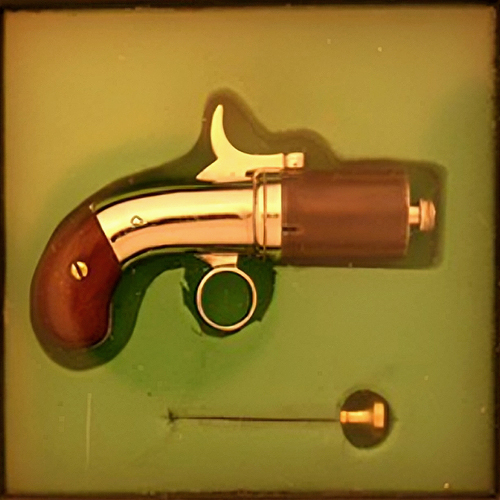
5-Charge Mini-Revolver Pepperbox
This five-charge mini-revolver is called Pepperbox.
This is a general designation for all types of firearms with a cylinder that simultaneously performs the function of the barrel. Of course, this construction is rather bulky, and its frontal view seems like the bottom of the Pepperbox with numerous holes.
However, before the 19th century, all multi-shot revolvers looked like this. Only then was a short cylinder connected to a single barrel invented.
In this model, the frame, the hammer, and the ring-shaped trigger are cast brass coated with nickel, and the removable cylinder is made of steel. Ironwood from Arizona is used to handle the handle.
The weapon is made on a scale of 1:5, and its length is 1¾ inches. The above models are fairly close to well-known ancient firearms—both in appearance and inner construction. In general, most miniaturists tend to recreate the original as accurately as possible—this is considered one of the important criteria for the quality of a miniature.
However, there are cases when gunsmiths perceive the task quite differently, interpreting their goal as free artists. They are not afraid to experiment, add innovations, or even invent their models.
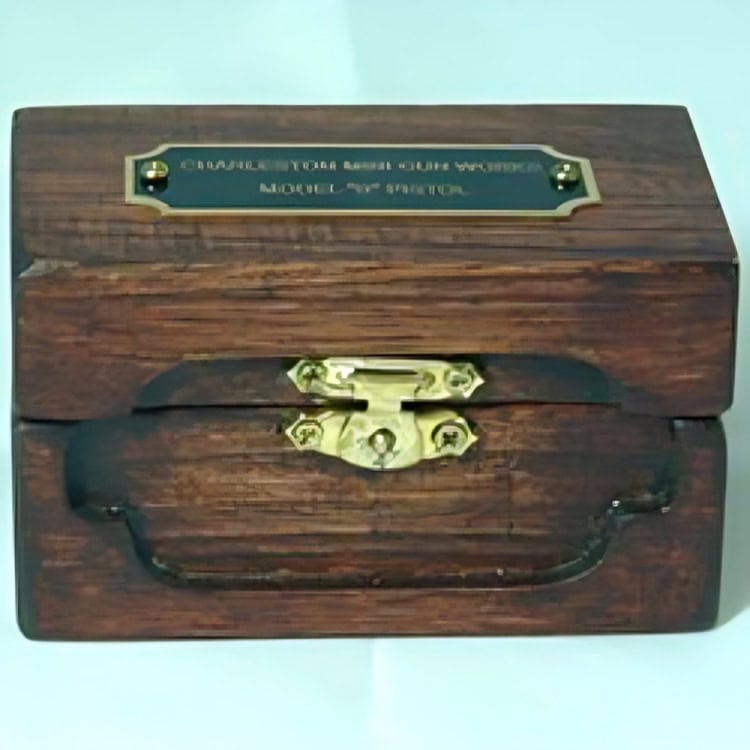
Berloque with a Blunderbuss Barrel
A Blunderbuss or a trombone – these names in the old days were given to short-barreled guns and boarding pistols with muzzles shaped like a trumpet.
An expanded barrel made it possible to stuff such weapons with grapeshot or simply chopped lead; their low accuracy was compensated by the area of the defeat. They were used mainly for shooting from a galloping horse (when it is impossible to aim well) and from short distances.
Since the middle of the 16th century, such guns have been widely used in many European countries’ cavalry and the navy.
Combined with the typical Berloque design, this barrel looks very unusual.
This model has a brass frame and a steel barrel. All moving parts of this pistol are made of hardened steel. For the handle, the wood of a 200-year-old walnut tree was taken.
The gun is packed in an elegant case with accessories: a ramrod and a box for cartridges. The gun was produced by the company “CMGW” (Charleston Mini Gun Works).
About the Author
My name is Olha Polah, and I have been working in miniature weapons production since 2015. I started the mini firearms brand and have been running the brand’s Instagram page since 2016. The brand’s miniatures are popular worldwide, with fans in 25+ countries. I became the sole owner of the brand in 2018 and created a comprehensive line of miniatures. More than 60 models of miniature weapons from various historical periods have been created. In November 2023, I was interviewed by Robert Dunn for the GunTech magazine, where I talked about the hardships I had to endure in my business. I also run a newsletter for the brand’s customers, which has evolved into a full-fledged magazine with in-depth articles published on the wpolah.com.

My mission is to make people’s lives more joyful by sharing interesting facts about miniature weapons and inspiring everyone to express themselves.

